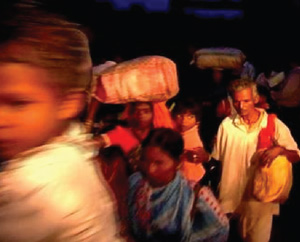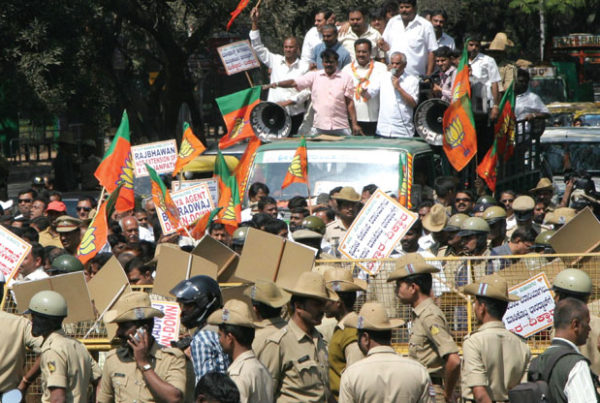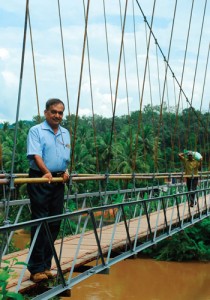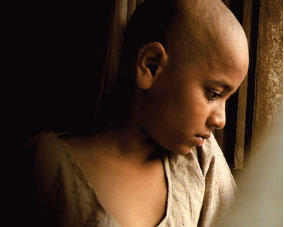In the doc: A column on documentaries
FILM: FROM HINDU TO HINDUTVA
DIRECTOR: DEBARANJAN SARANGI

Half-baked show: The first few frames of the film promise many answers but deliver little
FOR A filmmaker, mapping terrain is a daunting task. Besides the obvious choice (what stories do we tell? what do we leave out?) the task is a shade worse for the documentary filmmaker, engaging as he does with the kaleidoscopic realism of our society. Stories that he decides to frame have to be accommodated with their complexities. Debaranjan Sarangi’s film, Hindu to Hindutva, typifies the daunting shadow cast by the subject on the cinematic expression. Consider his frame — the communal violence that racked Kandhamal district in Odisha exactly two years ago.
When VHP leader Swami Laxmanananda was killed in August 2008, violence erupted. Ignoring the loud public claims of the local unit of Communist Party of India (Maoist) — they issued statements claiming responsibility for the murder — VHP cadre blamed the murder on the predominantly Christian Panna tribe. Adivasis were attacked and killed, their houses burnt, a nun gangraped even as churches and prayer halls were demolished. The VHP cadre violently prefaced chants of “Jai Shri Ram” with the condition that Christians would be allowed to live in the villages only if they reconverted. Most Christians refused.
Framed against this landscape, the title and the first few frames of Sarangi’s film promise answers. Here is a powerful capture of voices that speak plainly of the violence wreaked on them; of voices that justify the violence as sweet revenge. Particularly admirable is an interview that Sarangi manages with Sankar Baba, Swami Laxmanananda’s successor in Kandhamal. It takes effort not to laugh at the Baba’s claims that Christians disguised as Maoists had killed his leader. The juxtaposition of interviews — of Hindus claiming that Christians burnt their own houses alongside that of hapless Christians outside temporary sheds they call home — evoke strong memories of a style mastered by Anand Patwardhan in In the Name of God.
Historically, the film is important as it documents the communal violence that scarred Odisha
Historically, the film is an important one for its documentation of the communal violence that scarred Odisha. But if you expected an analytical and nuanced understanding of circumstances that led to the violence, of the process that led to Adivasis identifying themselves as Hindus (or Christians) or later of the emergence of the Hindutva movement, the answers remain elusive even after 45 minutes. Clearly, a film that is burdened by the subject and on a tangential note, the title itself.
—
This article was originally published in Tehelka, a leading independent news magazine in India, known for its investigative journalism.



